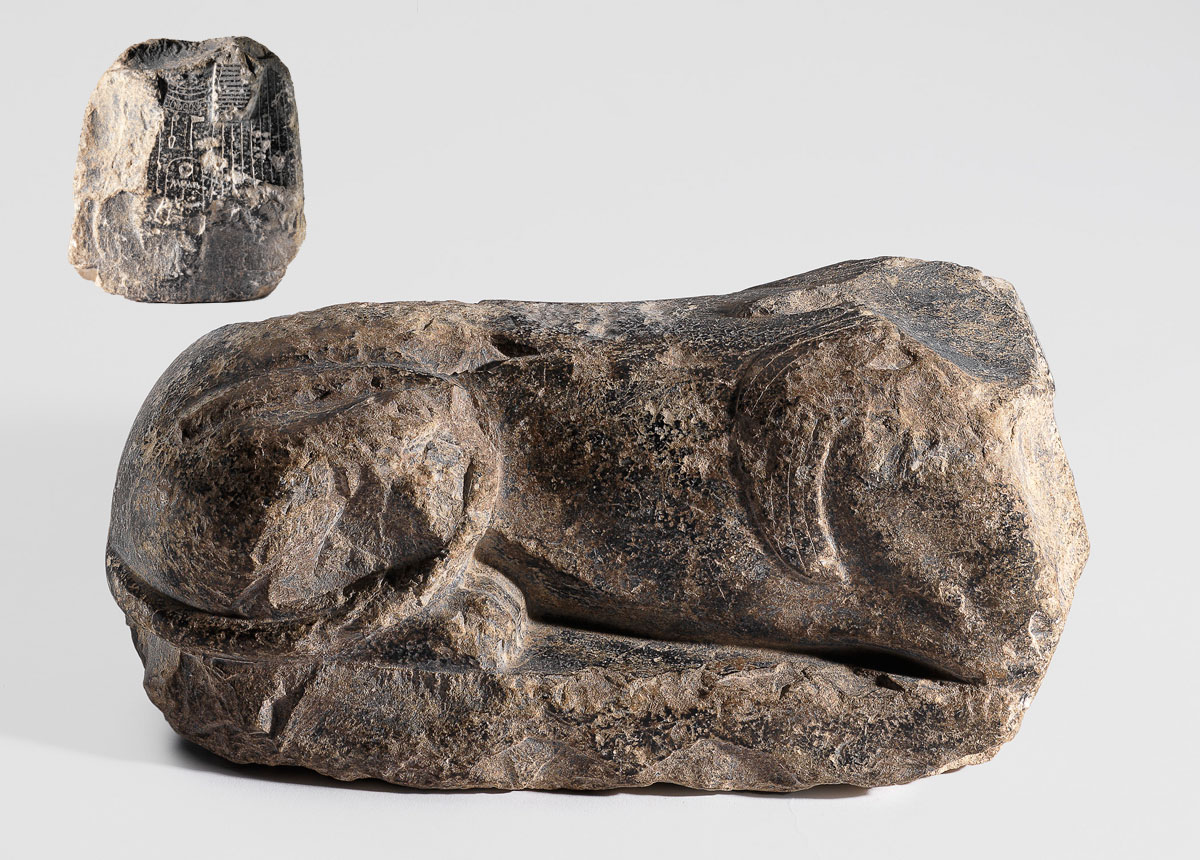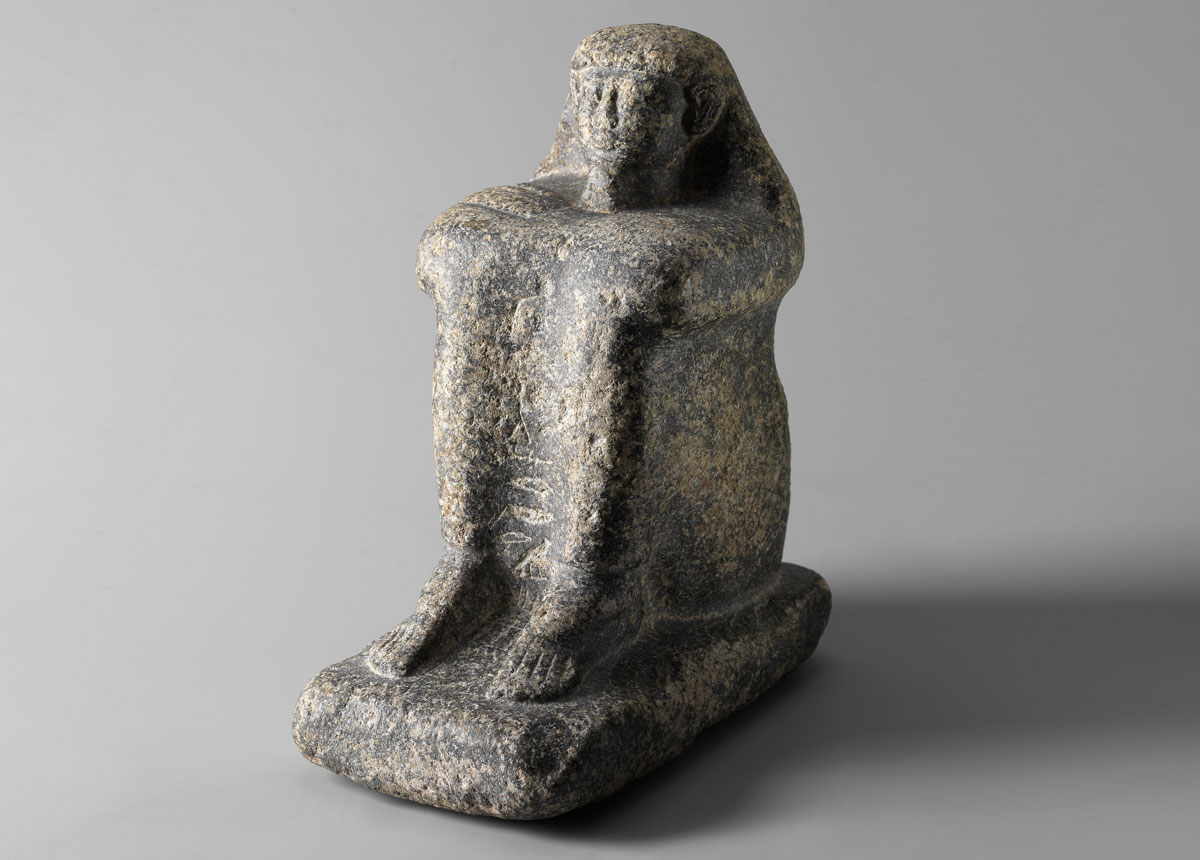Fragment of a sphinx of King Menkaure (Mycerinus)
Hazor, 2532–2504 BCE, gneiss
Israel Antiquities Authority
This fragment preserves the front paws of an Egyptian
sphinx statue. It bears the name of Menkaure, a Fourth
Dynasty king associated with the great pyramids
at Giza. The fragment was found in Late Bronze Age
Hazor in a context postdating Menkaure's reign
by more than a thousand years. Considering the
importance of Hazor at this time, it is possible that the
heirloom sphinx was a gift from one of the pharaohs
of the empire.
From the Catalogue »




